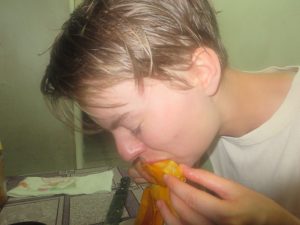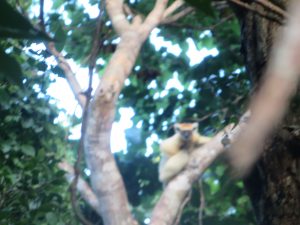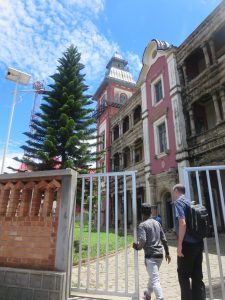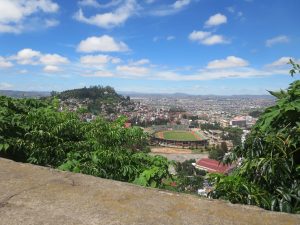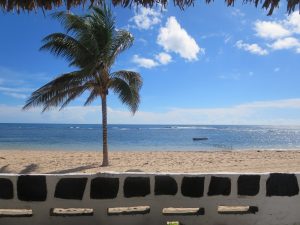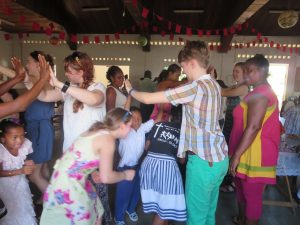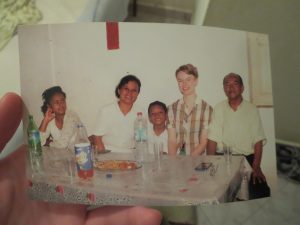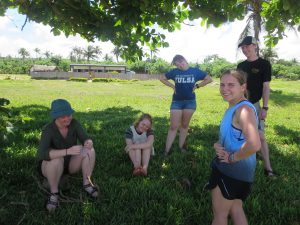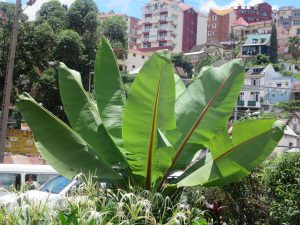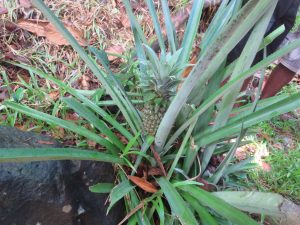[disclosure: photos take a really long time to upload, so ideally there would be more. Ill describe them don’t worry]
Mbola tsara!
(Direct translation: still good. This is how people greet each other here in the SAVA region. The equivalent of hello/bonjour and the Malagasy phrase I have said the most since being here. Only this week did I learn the meaning of the words. Still good. A wish I think.)
My host brother is an aspiring photographer. After looking through my photos from the week, I offered him the camera and here are some of his shots.
[Other photo at the table: a knife on a mango, mom in background]
Our dinner table is purple and is also where we spend most of our family time together. Rice or vary is the staple food in Madagascar and is eaten at nearly every meal. My mother teaches cooking classes and our rice is accompanied by beans, pasta, fish, squash, French fries, eggs or meat. On our table this week she taught me how to make croissants (dough, butter, rolling and careful folding, sometimes with pineapple jelly) and we ate them for breakfast. After most dinners we eat mangos. Here they are smaller and more flavorful than the US. We enjoy after-dinner conversation with sticky fingers.
This week the program drove 5 hours north to the Daraina region to study the Golden Crown Sifaka, a lemur endemic to the region.
Our campsite was on a wide slow river near a small village of people very curious about us foreigners. We spent each day hiking up various jungled hills in search of the elusive primates, and returned each day to one less chicken walking around the campsite. Daraina is the melding of 4 ecoregions, so the forest was not tropical but seasonally dry. It felt a little bit more familiar than the dense humid forests of the previous week.
[Beautiful photo of three students next to the river near sunset]
The Golden Crown Sifaka is larger than I expected. They sit in the trees crouched on branches, and occasionally check in on us to make sure we know they know we are there. While doing behavior studies I got to watch one for an hour. On Wednesday we climbed a steep mountain in search of a family to observe and after a few minutes of lemurless tree spottings, our guide Guy let out a laugh and shout of joy as a small flash of white flew between trees. We had already seen lemurs in a zoo and in a lemur park but to see a family in habitat was pretty magical.
The local people from the village cooked for us while we were studying and our stay culminated with a feast of goat and a night of singing and dancing. The goat had been hanging out in camp for our stay and on our last day we watched the slaughter for the coming meal. For the rest of the evening, the goat was roasted on a spit over charcoal. I had never witnessed a slaughter or tasted goat before, and both I’d say were worthwhile experiences. Our ending celebration lasted well into the night, as the students of the program were ushered in to join in the dancing while the men of the village sang and clapped to traditional and contemporary Malagasy songs.
[Kind of edgy photo of a goat body roasting on a spit with local people watching in the background]
I am back at home in Antalaha now. Soon to journey out to Cap Est for a week of marine studies.
(Featured are some amazing Pachypodium and one Baobab for those plant enthusiasts out there)
[photo of the baobab I saw also]
Still Good
